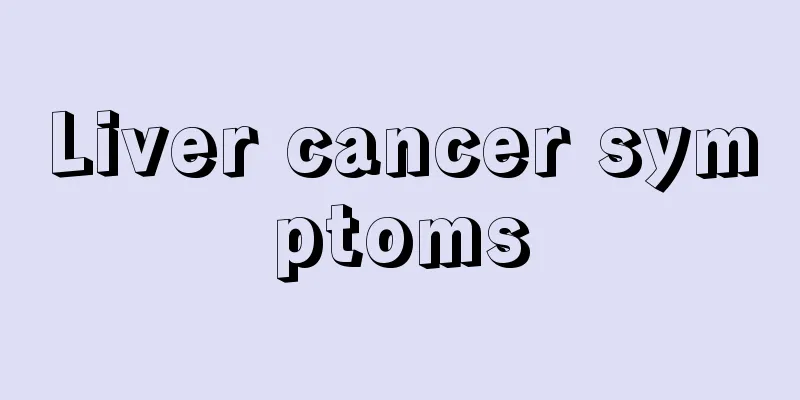How long can one live with cerebral infarction and lung infection

|
Because patients with cerebral infarction are bedridden for a long time, they are very likely to develop complications such as lung infection. Caring for patients with cerebral infarction should focus on preventing lung infections, as once an infection occurs, it will pose a great danger to the patient. If a cerebral infarction patient is found to have symptoms of lung infection, he or she should be sent to the hospital for treatment in time. Antibiotics are usually used to treat the infection. Controlling the infection will not cause the patient's death. How long can you live with cerebral infarction and lung infection? How long a patient with cerebral infarction and lung infection can survive should be determined based on their actual individual conditions. If the patient takes scientific treatment in time and the condition is not serious, once the infection is controlled, the patient will not be at risk of death, so don't worry too much. However, some patients often miss the best time for treatment and eventually die from lung infection. For the sake of personal health, they should go to a professional hospital for treatment and never delay. What to do if you have cerebral infarction and lung infection Patients with cerebral infarction and lung infection need to use sensitive antibiotics that can effectively kill pathogens. If the patient's condition is very serious, glucocorticoids can be considered, but the dosage of the drug needs to be reduced after the patient's condition improves. In addition, patients need to be given lipid-lowering, blood pressure-lowering and blood sugar-lowering drugs to improve various underlying diseases. It is necessary to use anti-inflammatory drugs to prevent the body's condition from becoming more and more serious. In order to improve the patient's symptoms such as dizziness and fatigue, vasodilator drugs are also needed, such as Danshen injection, etc. This combined medication can help the patient recover as soon as possible. After discharge from the hospital, the patient should still actively do rehabilitation exercises so that they can restore normal physiological functions. What are the symptoms of cerebral infarction? Common symptoms: hemiplegia, hemi-numbness (loss of sensation), homonymous hemianopsia, aphasia, apraxia 1. The disease starts suddenly, often starting in one upper limb, and then within a few hours or one or two days, the symptoms of neurological dysfunction progressively affect other parts of the limb on that side. 2. Most cases are not accompanied by symptoms of intracranial hypertension such as headache and vomiting. Secondary cerebral edema that occurs within a few days after occlusion of larger arteries can worsen symptoms and lead to impaired consciousness. Severe cerebral edema can also cause the risk of fatal brain herniation. 3. Middle cerebral artery and its deep perforating branches: The most vulnerable areas are contralateral hemiplegia (severe degree), hemiplegia (loss of sensation), homonymous hemianopsia, and aphasia when the dominant hemisphere (usually the left) is affected. Apraxia occurs when the non-dominant hemisphere is affected. 4. Internal carotid artery: It can cause blindness in the ipsilateral eye. Other symptoms are often difficult to distinguish from those that occur after occlusion of the middle cerebral artery and its deep perforating branches. 5. Anterior cerebral artery: uncommon, one side can cause contralateral hemiplegia (severe in the lower limbs, mild in the upper limbs), strong grip reflex and urinary incontinence. Bilateral involvement may cause apathy, confusion, and occasionally mutism and spastic paraplegia. 6. Posterior cerebral artery: There may be homonymous hemianopsia, contralateral hemisensory loss, spontaneous thalamic pain, or sudden involuntary hemiconvulsions; alexia may be seen when the dominant hemisphere is affected. 7. Vertebral-basilar artery: eye movement paralysis, pupil abnormalities, quadriplegia, difficulty in eating and swallowing, impaired consciousness and even death. |
<<: Can I soak my feet in red wine?
>>: Can kidney damage recover on its own?
Recommend
Where to start preventing and treating liver cancer? Several nursing measures for liver cancer
We must do relevant prevention and treatment work...
I started losing weight after a few days of dieting
In the first 1-2 weeks of weight loss, your weigh...
What are the symptoms of gastrointestinal bleeding
I believe many people have heard of the phenomeno...
What are the Chinese medicine prescriptions for stubborn and severe insomnia
People will encounter many diseases in life. Many...
The benefits of stretching the instep
I believe many friends who play football know the...
There is a little white spot on my eyelid, what's going on?
The skin around the eyes is actually very fragile...
How to quickly remove purple legs
Some people will find that there are always some ...
What can you eat to prevent liver cancer? Eating more delicious three bamboo shoots can prevent liver cancer
Lettuce: Increase appetite, prevent anemia Lettuc...
What is the correct way to use a band-aid
Band-aids are popular with many people because th...
What is the correct way to wear earbuds?
Walking in the streets, especially on the bus or ...
How to treat elbow effusion
Elbow joint effusion is one of the clinical manif...
What are the treatments for facial paralysis
Facial paralysis is a common disease, and it is a...
Homemade Natural Hair Dye
Hair dyeing is a very common thing. Many people l...
What are the plants that can repel mosquitoes
In the summer, the weather is hot and humid, and ...
Hepatitis B virus, beware of these four transmission routes
Hepatitis B virus (HBV) is a common liver disease...









